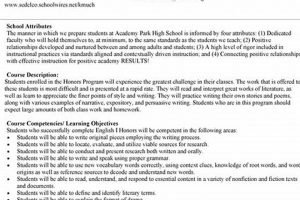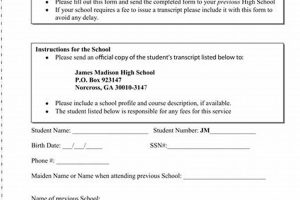Educators working with adolescent students require a diverse range of materials to facilitate effective learning. These resources can include traditional items like pens, paper, staplers, and organizational tools, as well as more specialized equipment such as scientific calculators, art supplies, or musical instruments. Digital resources, including software, online platforms, and interactive whiteboards, also play an increasingly crucial role in modern classrooms. For example, a mathematics instructor might utilize protractors, compasses, and graphing software, while a history teacher might employ maps, timelines, and primary source documents.
Access to appropriate resources is essential for creating a positive and productive learning environment. Well-equipped classrooms contribute to student engagement, enhance comprehension, and foster creativity. Historically, educational tools have evolved from simple slates and chalkboards to the sophisticated technology available today, reflecting a growing understanding of pedagogical best practices and the evolving needs of learners. Adequate provision of these resources demonstrates a commitment to quality education and recognizes the vital role educators play in shaping future generations.
The subsequent sections will explore specific categories of materials commonly used by educators in secondary education, offering guidance on selection, utilization, and potential benefits. Further discussion will also address strategies for resource management, budgeting, and incorporating technology effectively into the learning process.
Tips for Effective Resource Utilization in Secondary Education
Maximizing the impact of classroom materials requires careful planning and strategic implementation. The following tips offer practical guidance for educators seeking to enhance their teaching practices through effective resource management.
Tip 1: Prioritize Durability and Longevity: Investing in robust, high-quality materials minimizes the need for frequent replacements, ultimately saving time and resources. Consider items made from durable materials designed to withstand daily use in a classroom setting. For instance, sturdy binders and reusable dry-erase markers are preferable to flimsy folders and disposable pens.
Tip 2: Embrace Digital Tools: Integrating technology can streamline numerous tasks, from lesson planning and grading to communication and student collaboration. Explore interactive whiteboards, educational software, and online learning platforms to enhance instructional delivery and student engagement.
Tip 3: Organize for Accessibility: A well-organized classroom promotes efficiency and reduces time spent searching for misplaced items. Implement clear labeling systems, dedicated storage spaces, and routines for material distribution and collection.
Tip 4: Encourage Student Responsibility: Foster a sense of ownership by involving students in the care and maintenance of classroom resources. Assigning roles like material distribution or technology setup can encourage responsibility and minimize wear and tear.
Tip 5: Explore Cost-Effective Solutions: Seek out affordable alternatives to expensive brand-name products. Consider open-source software, refurbished equipment, or bulk purchasing options to reduce expenses without compromising quality.
Tip 6: Adapt Resources to Diverse Learning Styles: Recognize that students learn in different ways and tailor materials accordingly. Provide a variety of resources, including visual aids, hands-on activities, and auditory materials, to cater to individual learning preferences.
Tip 7: Regularly Assess and Evaluate: Periodically review the effectiveness of utilized resources. Solicit student feedback and analyze usage patterns to identify areas for improvement and ensure that materials continue to meet classroom needs.
By implementing these strategies, educators can create a supportive learning environment that fosters student success while maximizing the value of available resources. Effective resource management contributes to a more organized, engaging, and ultimately, more productive learning experience.
This exploration of resource utilization sets the stage for a concluding discussion on the importance of ongoing professional development and continuous adaptation to the evolving landscape of educational resources.
1. Planning and Organization
Effective instruction hinges on meticulous planning and organization. These foundational elements dictate the selection and utilization of resources, shaping the overall learning environment and impacting student outcomes. A well-organized learning space, supported by carefully chosen materials, directly contributes to a more focused and productive classroom.
- Curriculum Mapping:
Mapping the curriculum involves outlining learning objectives, pacing, and assessment strategies for the academic year. This process informs resource selection, ensuring alignment between instructional materials and learning goals. For example, a unit on quadratic equations necessitates graphing calculators and relevant software. A well-defined curriculum map facilitates proactive acquisition of necessary resources, preventing mid-semester scrambles for materials and ensuring a smooth instructional flow.
- Lesson Planning:
Detailed lesson plans outline specific activities, resources, and assessment methods for individual lessons. This granular approach ensures that appropriate materials are readily available, minimizing disruptions and maximizing instructional time. A lesson plan for a science experiment, for instance, would detail the required equipment, safety procedures, and data collection methods. Such foresight minimizes classroom disruptions and allows instructors to focus on student learning.
- Classroom Arrangement:
The physical layout of the classroom significantly influences learning dynamics and resource accessibility. Thoughtful arrangement facilitates efficient movement, collaborative learning, and easy access to necessary materials. Arranging desks in small groups encourages collaborative projects, while designated areas for specific resources, like a reading corner or a computer station, promote organized learning. A well-designed classroom layout maximizes space utilization and fosters a conducive learning environment.
- Material Management:
Efficient organization and storage of materials are crucial for maintaining an orderly classroom. Clear labeling, designated storage areas, and established routines for distribution and collection minimize time wasted searching for misplaced items. Implementing a system for checking out and returning shared resources, for instance, ensures their availability and longevity. Effective material management contributes to a smoother, more focused learning experience.
These facets of planning and organization are intrinsically linked to the effective use of resources in a high school setting. Investing time in these preparatory stages ensures that materials are readily available, appropriately utilized, and contribute meaningfully to student learning. A well-organized classroom, supported by a clear instructional plan, empowers educators to create a productive and engaging learning environment.
2. Instructional Materials
Instructional materials represent a crucial subset of high school teacher supplies, directly impacting the quality and effectiveness of education. These resources facilitate the delivery of curriculum content, engaging students and supporting diverse learning styles. The selection and utilization of instructional materials directly influence student comprehension, engagement, and overall academic performance. For example, a biology teacher might utilize anatomical models, microscopes, and dissection kits to provide hands-on learning experiences, while a literature teacher might employ novels, poetry anthologies, and literary criticism to foster critical thinking and analytical skills. The availability of appropriate instructional materials is essential for translating curriculum objectives into engaging and effective learning experiences.
The relationship between instructional materials and the broader category of high school teacher supplies is one of crucial interdependence. While organizational supplies, classroom management tools, and technological resources provide the framework for a functional learning environment, instructional materials form the core content of educational delivery. A well-stocked supply cabinet might contain ample paper, pens, and staplers, but without relevant textbooks, lab equipment, or art supplies, the educational process remains incomplete. Understanding this connection allows educators to prioritize resource allocation, ensuring that investments in high school teacher supplies encompass both the logistical necessities and the essential tools for impactful instruction. Practical applications of this understanding include developing comprehensive resource lists aligned with curriculum objectives, strategically budgeting for material acquisition, and establishing efficient systems for material management and distribution.
Effective instruction requires a balanced approach to resource allocation, recognizing the vital role of both general supplies and specialized instructional materials. Challenges can include limited budgets, evolving curriculum standards, and the need to cater to diverse learning needs. Successfully navigating these challenges requires ongoing evaluation of resource effectiveness, adaptation to emerging educational trends, and a commitment to providing students with the tools they need to thrive academically. Ultimately, the strategic selection and utilization of instructional materials, as a key component of high school teacher supplies, directly impacts the quality of education delivered and the potential for student success.
3. Assessment Tools
Assessment tools constitute a critical component of high school teacher supplies, serving as the primary means of gauging student learning and informing instructional adjustments. These resources encompass a wide range of formats, from traditional tests and quizzes to performance-based assessments, portfolios, and presentations. The selection and application of appropriate assessment tools directly influence the accuracy of student evaluation and the effectiveness of pedagogical strategies. For instance, a mathematics teacher might employ timed tests to assess computational fluency, while a social studies teacher might utilize research papers to evaluate critical thinking and analytical skills. The connection between assessment tools and the broader category of high school teacher supplies lies in their shared contribution to the overall educational process. While textbooks, lab equipment, and art supplies provide the means for instruction, assessment tools provide the means for evaluating the effectiveness of that instruction. This interconnectedness underscores the importance of considering assessment needs when planning resource acquisition.
Practical applications of this understanding include aligning assessment tools with specific learning objectives, ensuring that evaluation methods accurately reflect the skills and knowledge being taught. A physics teacher, for example, might utilize lab reports to assess practical application of scientific principles, while an English teacher might employ essay writing to evaluate analytical and interpretive skills. Furthermore, incorporating diverse assessment methods caters to different learning styles and provides a more comprehensive picture of student understanding. For example, offering both written exams and oral presentations allows students to demonstrate their knowledge in different formats, accommodating diverse strengths and weaknesses. This approach also necessitates a broader range of resources, including rubrics, presentation software, and recording equipment, highlighting the interconnectedness of assessment tools and other high school teacher supplies.
Effective utilization of assessment tools requires careful planning, resource allocation, and a commitment to ongoing evaluation. Challenges can include time constraints, limited resources, and the need for consistent and equitable evaluation practices. Addressing these challenges requires strategic budgeting for assessment materials, professional development in assessment design and implementation, and a commitment to using assessment data to inform instructional improvements. Ultimately, recognizing the essential role of assessment tools within the broader framework of high school teacher supplies enables educators to create a more effective and data-driven learning environment, promoting student growth and academic success.
4. Classroom Management
Classroom management represents a critical aspect of effective instruction, inextricably linked to the strategic utilization of high school teacher supplies. A well-managed classroom environment, fostered by appropriate resources and strategies, directly influences student engagement, learning outcomes, and overall educational effectiveness. This exploration delves into the multifaceted nature of classroom management, highlighting its connection to resource allocation and utilization.
- Organizational Systems:
Effective organization forms the cornerstone of successful classroom management. Utilizing appropriate supplies, such as planners, calendars, storage containers, and labeling systems, enables educators to create structured learning environments. A designated area for student work submission, clearly labeled bins for different subjects, and a system for tracking assignments contribute to a sense of order and minimize disruptions. These organizational systems streamline daily routines, maximize instructional time, and foster student responsibility.
- Communication Strategies:
Clear and consistent communication is essential for maintaining a positive learning environment. Utilizing communication logs, designated communication platforms, and visual aids, such as posters outlining classroom expectations, facilitates transparent interaction between educators, students, and parents. These strategies minimize misunderstandings, promote accountability, and foster a sense of community within the classroom. Access to appropriate communication tools, such as whiteboards, projectors, or online platforms, further enhances the clarity and reach of instructional delivery.
- Behavior Management Techniques:
Establishing clear expectations and implementing consistent behavior management strategies are crucial for maintaining a productive learning environment. Utilizing resources such as reward systems, visual timers, and designated quiet areas allows educators to address behavioral challenges proactively and constructively. A designated cool-down corner equipped with calming sensory materials, for instance, can provide students with a space to regulate their emotions and return to learning more effectively. These strategies contribute to a positive classroom climate and minimize disruptions.
- Student Engagement Strategies:
Maintaining student engagement requires a dynamic and stimulating learning environment. Utilizing varied instructional materials, incorporating interactive activities, and providing opportunities for student choice fosters active participation and enhances learning outcomes. Access to engaging resources, such as interactive whiteboards, educational software, and hands-on manipulatives, can significantly enhance student motivation and learning. These strategies contribute to a more dynamic and effective learning experience.
These facets of classroom management demonstrate a clear connection to the strategic selection and utilization of high school teacher supplies. Investing in resources that support organization, communication, behavior management, and student engagement directly contributes to a more effective and positive learning environment. A well-managed classroom, supported by appropriate resources, empowers educators to create a space where students can thrive academically and socially.
5. Technology Integration
Technology integration represents a transformative shift in the landscape of high school education, fundamentally altering the definition and utilization of teacher supplies. No longer limited to traditional textbooks and classroom materials, educators now leverage digital tools and platforms to enhance instruction, personalize learning, and foster student engagement. This integration necessitates a shift in resource allocation, professional development, and pedagogical approaches. The following facets explore the multifaceted connection between technology integration and high school teacher supplies.
- Digital Content and Resources:
The rise of digital textbooks, online learning platforms, and multimedia resources has expanded access to educational content while simultaneously changing the nature of teacher supplies. Educators now curate digital libraries, create interactive lessons using multimedia software, and leverage online simulations to enhance student understanding. This shift requires investments in software licenses, digital subscriptions, and reliable internet access, redefining the concept of essential classroom materials. For example, a history teacher might utilize virtual museum tours and interactive timelines, while a science teacher might incorporate online simulations of laboratory experiments, requiring access to specific software or online platforms.
- Instructional Technology:
Interactive whiteboards, projectors, document cameras, and other instructional technologies have become integral components of the modern classroom, enhancing instructional delivery and student engagement. These tools facilitate dynamic presentations, interactive learning activities, and real-time feedback, transforming the traditional teacher-centered classroom into a more collaborative and student-centered learning environment. This shift necessitates investments in hardware, software, and technical support, impacting resource allocation within educational budgets. A mathematics teacher, for instance, might use a smartboard to demonstrate geometric proofs, while a language teacher might project interactive grammar exercises, requiring access to specific hardware and software.
- Assessment and Data Management:
Technology integration has significantly altered assessment practices, enabling educators to collect and analyze student data more efficiently and effectively. Online assessment platforms, grading software, and data analytics tools provide real-time insights into student performance, informing instructional adjustments and personalized learning interventions. This shift necessitates investments in software licenses, data management systems, and professional development in data analysis. A teacher might utilize online quizzes to assess student comprehension immediately, adjusting instruction based on real-time feedback, requiring access to online assessment platforms and data analysis tools.
- Communication and Collaboration:
Technology facilitates seamless communication and collaboration among educators, students, and parents. Learning management systems, email platforms, and video conferencing tools enable efficient communication, assignment distribution, and feedback provision. These tools foster greater transparency and engagement, enhancing the overall learning experience. For example, a teacher might utilize a learning management system to post assignments, provide feedback, and communicate with students and parents, requiring access to these platforms and reliable internet connectivity. This necessitates investment in platform subscriptions and ongoing technical support.
These facets of technology integration highlight its profound impact on the concept of high school teacher supplies. Effective integration requires strategic planning, resource allocation, professional development, and a commitment to leveraging technology to enhance the learning experience. As technology continues to evolve, educators must adapt their approaches to resource acquisition and utilization, ensuring that investments in high school teacher supplies reflect the changing needs of the digital age and support a dynamic and engaging learning environment for all students.
Frequently Asked Questions
This section addresses common inquiries regarding the acquisition, utilization, and management of resources for educators in secondary education settings. Clear and concise answers aim to provide practical guidance for effective resource management.
Question 1: How can educators effectively manage limited budgets for classroom materials?
Prioritizing essential resources, exploring cost-effective alternatives like open-source software and refurbished equipment, and seeking funding opportunities through grants or community partnerships can maximize limited budgets. Collaboration with other educators to share resources can also prove beneficial.
Question 2: What strategies can be employed to ensure equitable access to resources for all students?
Implementing a system for lending materials, providing access to technology both during and outside of school hours, and seeking community support to provide necessary supplies can help ensure equitable access for all students, regardless of socioeconomic background.
Question 3: How can technology be integrated effectively without overwhelming educators or students?
Prioritizing professional development opportunities focused on technology integration, starting with a few key tools and gradually expanding usage, and providing ongoing technical support can facilitate smooth and effective technology integration.
Question 4: What are some strategies for organizing and maintaining a well-stocked and efficient classroom?
Utilizing clear labeling systems, designated storage areas for different materials, regular inventory checks, and established routines for material distribution and collection contribute to a well-organized and efficient classroom.
Question 5: How can educators adapt resource utilization to cater to diverse learning styles and needs?
Offering a variety of instructional materials, including visual aids, hands-on activities, and auditory resources, utilizing assistive technologies when necessary, and providing differentiated instruction can cater to diverse learning styles and individual student needs.
Question 6: What are some key considerations for selecting high-quality, durable materials that offer long-term value?
Prioritizing materials made from robust, sustainable materials, considering product warranties and guarantees, and reading reviews from other educators can inform the selection of durable, high-quality resources that offer long-term value and minimize the need for frequent replacements.
Strategic resource management is essential for creating a positive and productive learning environment. Careful planning, thoughtful selection, and ongoing evaluation of materials contribute significantly to student success.
Further exploration of this topic might delve into specific examples of effective resource utilization in various subject areas or discuss strategies for building community partnerships to support resource acquisition.
Equipping Educators
This exploration has underscored the crucial role materials play in shaping effective learning environments within secondary education. From fundamental organizational tools to sophisticated technological resources, the availability and strategic utilization of appropriate supplies directly influence instructional effectiveness, student engagement, and overall academic outcomes. Careful consideration of resource allocation, ongoing evaluation of material effectiveness, and a commitment to adapting to evolving educational needs are essential for maximizing the impact of these tools.
Investing in quality resources represents an investment in the future of education. Equipping educators with the necessary tools empowers them to create dynamic, engaging, and supportive learning environments where students can thrive. Continued focus on providing appropriate and accessible materials for all students remains paramount for fostering educational equity and ensuring the success of future generations. This requires ongoing dialogue, collaboration, and a shared commitment to providing every student with the opportunity to reach their full potential.







